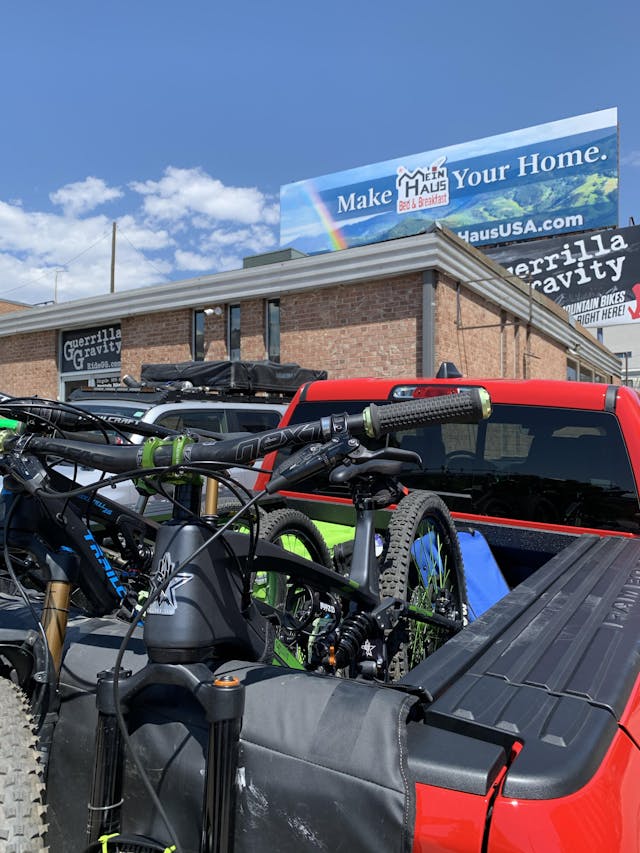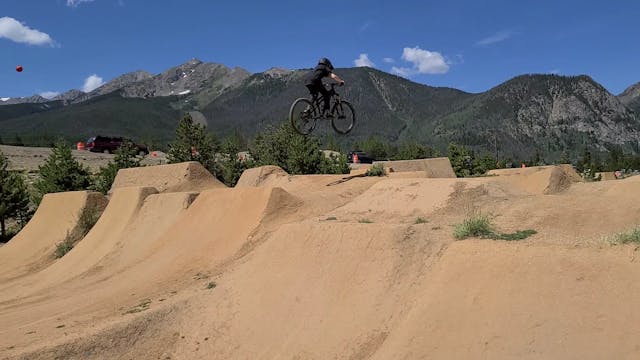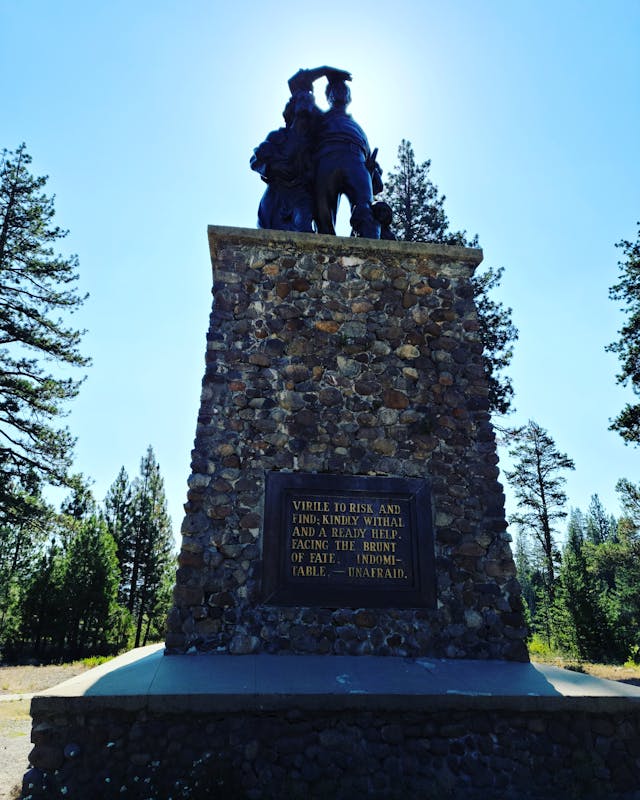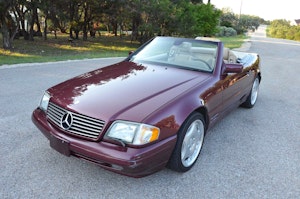Media | Articles
Avoidable Contact #69: A 6124-mile experiment in child (and parent) abuse, Part 1

“It should not be denied… that being footloose has always exhilarated us. It is associated in our minds with escape from history and oppression and law and irksome obligations, with absolute freedom, and the road has always led West.” This Wallace Stegner quote begins Jon Krakauer’s memorable book, Into The Wild. Almost 20 years after the publication of that book, Krakauer revealed that its protagonist, Chris McCandless, hadn’t just been driven to his Western death by a desire for adventure and novelty. Rather, it was years of physical abuse at the hands of his father that caused him to abandon his Datsun B210 in the desert and disappear into the wild.
Four days and more than two thousand miles into our cross-country journey, as I stood above my crumpled, bleeding 11-year-old son and bellowed for him to stand up, I realized that I was perhaps sowing the seeds of a similar deadly yearning for detachment down the road, a bitter fruit that germinates in love then flowers with the mostly admirable feelings of pride and expectation but eventually falls to the ground with the sodden thump of They’ve found his body delivered over the staccato interruptions of a distant phone connection. The only thing to do was to crumple to the ground myself, to hold my hands out to him and find some comforting compromise between the anger I’d just escaped and the abject parental despair I was entering. The former frightens children, but the latter terrifies them.
We’d started well enough, loading a sixty-eight-thousand-dollar RAM Laramie 1500 with four state-of-the-art bicycles and enough equipment to carry us through a 15-day trip with no fixed agenda but one: a week-long downhill mountain bike camp at Woodward Tahoe, just west of Reno. I’d allocated us five days to get there and four to return, figuring that we would find our adventures along the way. Normally we’d fly to something like this but my son John’s mother had firmly put the kibosh on that idea. So we would drive, following Mom’s Byzantine rules for COVID-19 prevention along the way: Take your own pillowcases. No indoor activities. When taking fast food from the drive-thru window, wipe all containers with alcohol before emptying the food into separate disposable bowls. It all struck me as profoundly insane, but from her perspective it was profoundly insane to let your ex-husband disappear for more than two weeks with your only son, so there you go. It balances out.
Day One saw us cover Columbus, Ohio, to Kansas City, Kansas, via St. Louis. We stopped at a downtown skatepark called Rampriders and tried various lines for a bit in hundred-degree indoor heat. There had been riots the night before just down the street, but people appeared willing to leave their drama at the Rampriders door. Then we visited the Youth Activity Park in O’Fallon, Missouri, home of what is supposed to be America’s largest asphalt pump track. Approaching one of the jumps and making the hard front-wheel pull to clear it, I was pretty sure I felt some kind of muscle tear in my side, so I called time on the proceedings. By the time we got to Kansas City it was past midnight and John was doubly frustrated by the length of the drive and my insistence on playing Albert King’s Kansas City a literal 50 times in a row as we approached our destination. “I might take a train,” I sang. “I might take a RAM.” Over and over again.
About that RAM. I think the word is out to all the clued-in car people that the RAM is the most civilized and car-like of the half-ton pickups by a long shot. It’s not really close. My oft-referenced 6.2 Silverado would pull this big red truck backwards into a ditch, but it also head-tosses its occupants every time it drives over anything thicker than a sheet of paper. Chrysler has figured out how to completely eliminate the side-to-side rocking that previously came as standard equipment on everything with a 1250-pound payload. As a consequence, it’s no trouble to drive this thing 15 hours a day in perfect serenity. That kind of long-haul competence was once considered the exclusive domain of the Mercedes-Benz S-Class, but now you can get it for less, with a six-foot pickup bed thrown in the deal for free. The seats are without peer in the business, particularly now that Saab is gone. It’s quiet inside, with a dynamic and well-staged Harmon/Kardon stereo. The rear seat is the biggest in the business, and it’s not close. The week before this adventure, John and I had done 2100 miles in a 2019 Nissan Frontier crewcab, visiting North and South Carolina. He was eloquent about the RAM’s superiority. “It’s not just that it’s better than the Nissan … it’s that it as as much better than our Chevy as the Chevy is better than the Nissan.” On a trip like this, he’s right.
Marketplace
Buy and sell classics with confidence

Day Two we visited Trailcraft Cycles, which makes the outstanding Maxwell 26 mountain bike used by John for everything from indoor bike parks to 40-foot downhill jumps, and Guerilla Gravity, which built my “Megatrail” enduro bike out of carbon fiber right in its Denver factory. These are heady times for bike makers, who are caught between unprecedented demand for their products and an inability to source parts via what has become a very China-centric supply chain. Trailcraft charges between $2000–$7000 for children’s bikes, and they have a 90-day waiting list. This, in a country where 40 percent of the workforce is unemployed or underemployed. Yet, as John and I would see in the weeks to come, this instant-bake Depression is one that seems to fall much harder on some than on others.
We stayed with some family in Denver, taking an evening ride around the Park Hill neighborhood. All the stars aligned for me, my aching side took a 10-minute break, and I was able to manipulate my “dirt-jumper” bicycle with a little less pain than normal, managing a couple of fairly burly static hops—for a 48-year-old man, anyway. It was probably the last time I wouldn’t be in pain that trip.

In the morning we visited Trestle Bike Park, a downhill park west of Denver. Near the end of the day I got a flat tire on a trail called “Spicy Chicken” and had to walk down the mountain. Along the way, I asked about 30 riders to find my son at the lift station and let him know I was OK. When I arrived, about an hour later, I found him huddling in a corner. Nobody had said a word to him. He figured I’d fallen off the mountain or been badly hurt. After three-and-a-half decades of racing BMX, I forget that sometimes cycling disciplines don’t have the same all-for-one-and-one-for-all sense of community. Two weeks previously, at Snowshoe, John and I had halted our ride and spent an hour helping to recover a 15-year-old who had fallen 30 feet into a stand of trees—but karma, in my experience, is not quite as real as, say, the Easter Bunny.

Day Four we went to Frisco Bike Park, where the whole thing fell apart. John was effortlessly jumping some of the biggest gaps there, but he was in a mood to be negative about his riding. We argued as to whether or not he could clear a particular section. I said he could; he said he couldn’t. He wanted to quit; I told him to keep going. Then he crashed, of course. “I should have quit earlier,” he sobbed, holding his arm at a funny angle and rolling on the ground.
That word—quit—is about all my son can say to enrage me. It’s no use going over what I said, or what he said in return, or how I felt when I realized I would have to pick him up and carry him back to the truck. The first five hours of the trip to Salt Lake City were spent in silence. Then I explained myself to him, and he said he understood me. Perhaps he agreed merely to placate me. I try never to forget that to be a child is to be continually subject to the whims of adults, with no defense. That’s why child abuse is the worst kind of abuse: it’s directed at people who have literally no option but to take it. We stayed at a very nice historic bed and breakfast. I let him pick the dinner (Little Caesars, ensuring I’d be awake all night) and the activities (a series of whimsical games he made up at random using various items in the house which had to be flicked or thrown past each other) in penance for my outburst.
Outside Salt Lake we visited Bonneville. It was bone-dry. John expressed a desire to ride his Trailcraft across the flats to the mountains. “Go as far as you want, but make sure you don’t lose sight of me,” I commanded. He was barely a dot on the horizon when a couple of SUVs showed up and started making random, seemingly directionless high-speed passes on the salt. Just when I’d made up my mind to drive out and get him, I saw the dot start growing instead of shrinking. Twenty long minutes later we were loaded up. We posed the RAM for photos and discussed how the salt flats came to be. “If they take a billion dollars’ worth of salt off the surface every year,” he asked, “how long until there’s no salt left?”
“I can’t see them running out,” I replied, “but a lot of people have said the same ignorant thing about a lot of different resources in the past.”
Our final 400 miles passed in idle conversation spurred by John’s paging through the Pocket Ref book by Thomas Glover, a gift to him from one of my readers. We talked about the tensile strength of wood, the way that tempering and quenching adds and removes hardness from metal, why the “800 number” used to be a thing. Which led to the story of the “phone phreaks,” John Draper and the “Captain Crunch” whistle, Kevin Mitnick and social engineering. I had to change the subject before we both somehow convinced each other to find an old Bell Labs office and break in.
“We’re coming up to Donner Pass,” I told him.
“The place where people ate each other, right?”
“The very same.”

At the entrance to Donner Memorial Park there is a stone with this engraving:
“‘No one knows the strength of kindred love until it is tried.’ — Elizabeth Keegan, 12 years old, 1865.”
“What’s that mean?” John asked.
“I don’t know. Maybe we are on the way to finding that out.” But I thought of something else I’d read from the same time: Virginia Reed, who survived the Donner incident as a child then grew up to write, “I laugh even to this day when I think of it and I sometimes imagine I must be a thousand years old now; it does not seem to me that I ever was a child, and yet in many respects I am a child even now.” Ah, that’s the problem. As in Robert Pirsig’s Zen and the Art of Motorcycle Maintenance and Mona Simpson’s infamous Anywhere But Here, my son and I were on a trek West without effective adult supervision. In many respects, I am a child even now. And so we walked back to our big red truck, John cradling his injured arm and me limping on what felt like a stress-fractured foot, with 11 days ahead of us. Eleven days to ride our bikes, to argue and then agree, to learn and then forget what we’d just learned. Escaping history and those irksome obligations, but not free of each other, in the same that Chris McCandless was never free of his father until he fell to the floor of that abandoned schoolbus, as light as a fallen sparrow, no more substantial.
To be continued












